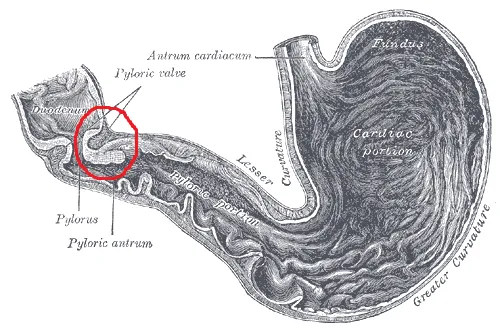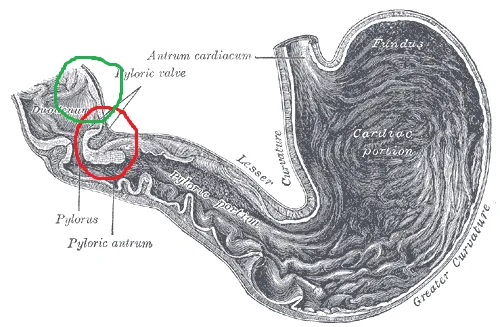
It is in this location that the thickening of the pyloric muscles occurs, which obstructs the gastric emptying.
It occurs mostly in adult men between 40 and 50 years of age. It has an incidence of 2% to 5% of the population and it presents in the pyloric and duodenal canal 85%, while only 6.5% of the time on the gastric level.

In the green circle is where the ulcers that cause the injury and the thickening of the pyloric muscles appear.
It can be classified according to its commitment to motility in:
• Compensated.
• Subcompesated.
• Decompensated.
And according to the stenosis' diameter in:
• Moderate: 10-15 mm.
• Severe: <10 mm.
• Quid: <5 mm.
The signs and symptoms of a person with pyloric stenosis are:
• Epigastric pain and pyrosis.
• Gastric fullness.
• Vomiting.
• Anorexy.
• Weightloss.
• Constipation
The treatment is based on 2 things:
- Surgery to eliminate the obstruction (Gastroduodenostomy, gastrojejunostomy, subtotal of gastrectomy).
- Treat the disease that produces the ulcer and therefore the inflammation and thickening of the pyloric muscles.
Mari.
If you like this article, give it a resteem, so the information will be shared and it will reach more people.
Bibliography:
Schwartz Principles of Surgery 9th Edition
Images:
Google images '' Labeled for reuse ''. Source: Wikimedia Commons.